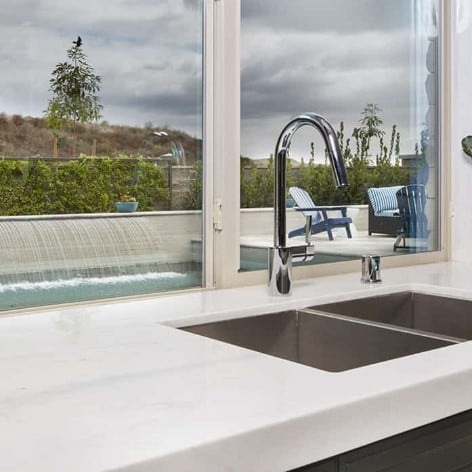
Marble is a stunning stone with a timeless beauty and classic look that’s unparalleled by other materials. Marble has an extensive history in Italy—it’s been a part of Italian culture and industry for over 2,000 years. If you’re an admirer of Italian marble or you’re considering installing some in your home, you may be wondering about the beautiful history and origins of marble products.
White marble is the ultimate classic when it comes to natural stone. It’s popular for good reason, and used for a variety of applications from countertops to art to architecture. So where does this gorgeous stone come from?
The most common types of white Italian marble are Carrara, Calacatta and Statuario, all of which come from a region near the city of Carrara, Italy. We’ll take a closer look at the origins of each one.
Carrara Marble
You’ve probably heard of Carrara marble—after all, it’s world-famous and highly sought-after for its quality and undeniable beauty. The Apuane Alps, a mountain range in central Italy, are rich in Carrara marble, which is named for the nearby city of Carrara.

The Apuane mountains have over 600 quarry sites that produce Carrara marble. The stone has been quarried here since the time of Ancient Rome, and it’s been used in many great feats of art and architecture—from classic buildings such as The Pantheon to famous Renaissance sculptures. Throughout Italy, white marble was and continues to be used for everything from window sills and countertops to door jambs and street curbs.

Calacatta Marble
Another popular type of white Italian marble is called Calacatta marble. While it can be difficult to distinguish Calacatta from Carrara, the major distinction is that Calacatta generally features thicker and more dramatic veining, while Carrara has a softer, finer, feathery look. It is also less common than Carrara marble.
Statuario Marble
Finally, Statuario (or Statuary) marble is a rarer Italian stone that is quarried above Carrara as well. Statuario is distinctive for its bold, high-contrast appearance, with dark grey veins on a bright white field. It is named for its use in famous sculptures like Michelangelo’s David. This type of marble comprises only about 5% of the total marble quarried in the Carrara region, and even today it’s in high demand.
The Origins of Marble in Italy
Now that you know a little more about the quarries where your marble slab comes from, let’s dive a little deeper. How was the marble in the Apuane Alps formed?
Marble is a metamorphic rock, meaning that it was formed under extremely high pressure. The marble in Italy was originally limestone millions of years ago. Over time, with the movement of the earth’s crust and the formation of these mountains, extreme pressure transformed the limestone into the hard, beautiful marble found there today.
Not only has marble been an integral part of Italian culture for 2,000 years, but its formation took place over the course of many millions. Every time you use your kitchen’s Carrara marble countertops or walk across the Calacatta tile floors in your bathroom, you’re enjoying a truly exquisite and history-rich surface like no other in the world.
See what your kitchen or bathroom would look like with Italian marble with the Just Imagine Visualizer from Arizona Tile.





